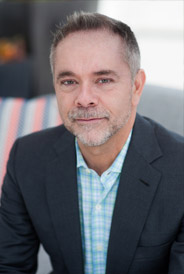EMBRYO DONATION PROGRAM
At Acacio Fertility Center, we provide support, care, and knowledge for all of your Pathway-to-Parenthood options. Parenthood can come from many different avenues and this is why we have incorporated the Embryo Donation Program, allowing those who have undergone IVF and who have completed their families, the option to donate their unused embryos to other hopeful parents. This program provides the opportunity for intended parents to carry a pregnancy and to give donated embryos a chance at life.
We are honored to provide this meaningful and affordable option to those who are ready to enlarge their families.
If you are interested in this program, please inform us so that we can provide further information on existing embryos which have been generously and gratefully donated for embryo donation.
Embryo Transfer & Donation
Embryo transfer is the final step of the in vitro fertilization process. It usually occurs two to three days after the fertilization of the egg when the embryos are at the two- to eight-cell stage. Some embryo transfers occur five days after fertilization; instead of transferring the embryo at the cell stage, the day-5 embryo is now a blastocyst. The cells in the blastocyst have just begun to differentiate, increasing the chances of viability. With blastocyst embryo transfer, fewer — but hopefully better-quality — embryos will need to be transferred. This would reduce the possibilities of multiple pregnancies without compromising pregnancy success.
Procedure & Medications
The timing of transfer is important, as the endometrium needs to be appropriately prepared to receive the embryos. The ideal window of receptivity is during the luteal phase, which is during the second half of a woman's menstrual cycle and when progesterone is significantly higher. If f Embryo Donation embryos are being transferred, a woman may be given estrogen treatments for two weeks prior to transfer and then estrogen and progesterone for endometrium preparation.
Just before transfer, the transfer recipient is usually required to have a full bladder to enable easier viewing of the uterus on the sonogram. A sonogram is used to help guide the physician during the transfer process. A predetermined number of embryos is loaded into a thin transfer catheter and inserted through the cervical canal. The sonogram helps guide the catheter into the uterine cavity and more specifically within 1 to 2 cm from the top of the uterus (fundus). The embryos are deposited and the catheter will be checked to ensure that all contents have been transferred.
Per the guidance of the physician, the recipient may receive an injection of human chorionic gonadotrophin (hCG) to stimulate the ovaries to produce more progesterone during the implantation phase (three to four days after transfer). Self-injections of hCG may also be recommended in the days following the embryo transfer, as well as progesterone suppositories. Estrogen medication may also be given to recipients after embryo transfer.
Follow-Up
Following the procedure, the recipient will usually be advised to rest on her back in a recovery room for a couple of hours. Some physicians may recommend bed-rest for the first 24 hours after transfer while others may allow their patient to resume normal activities shortly after the procedure. There are no documented studies that suggest either bed-rest or continuing normal activities has a better pregnancy success rate. A pregnancy test is typically administered two weeks after transfer.
Number of Embryos
The number of embryos transferred during an IVF cycle has been heavily debated over the years. While some physicians may recommend up to six embryos in one transfer, some professional societies and current medical literature state no more than four embryos will produce optimal results. Multiple pregnancies only increase the possibility of complications for both the mother and the fetuses.
Discover today’s most advanced embryo transfer with Acacio Fertility Center. We work with patients from all over Southern California, from Bakersfield (Central Valley CA) to Orange County, and the OC communities in and around Laguna Hills, Laguna Niguel and Lake Forest. Use our convenient Request an Appointment form.












